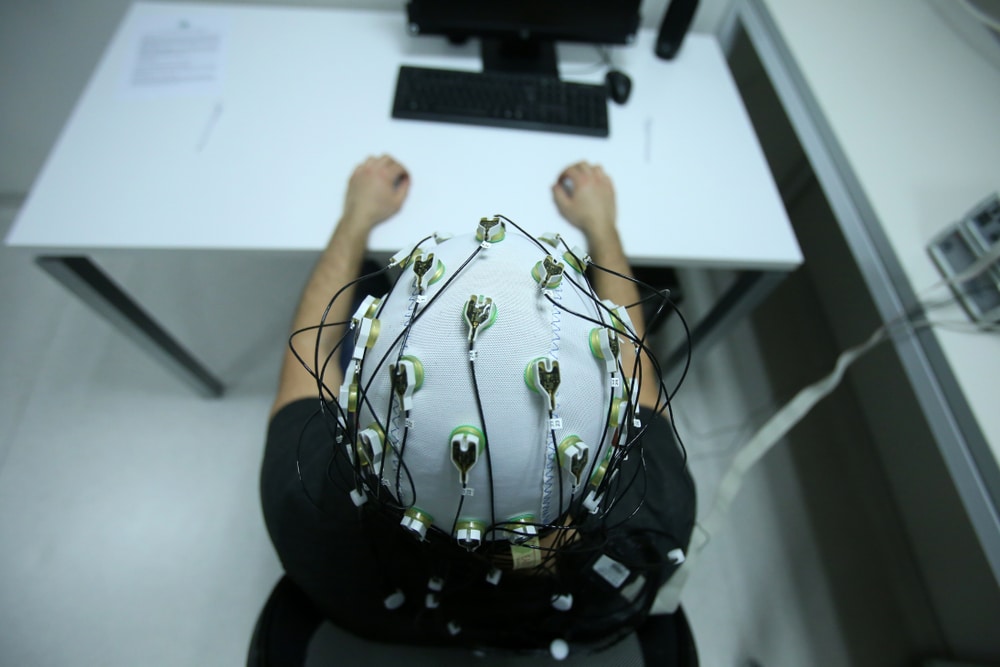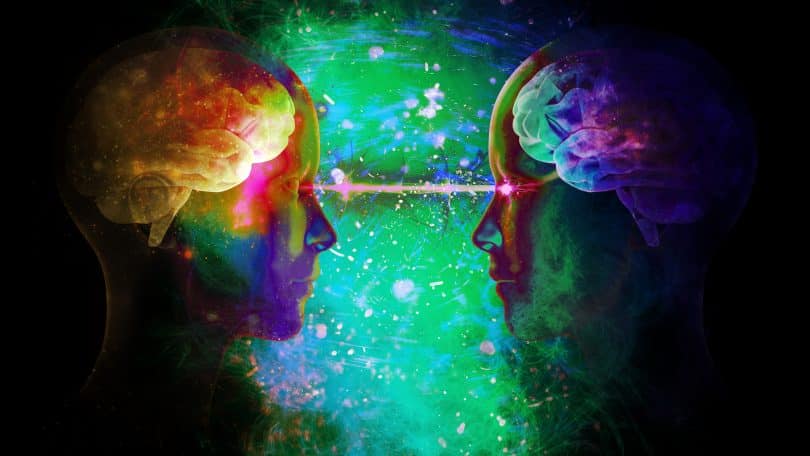Among those who use psychedelics regularly, there is talk of “shared hallucinations” during which two or more people will see or experience the same things throughout the course of a trip. Healthcare professionals have dismissed the phenomenon as a “rare psychiatric condition”, but theories (and even some recent studies) exist claiming that there is way more to these shared hallucinations than meets the eye.
To stay current on everything important happening in the cannabis and psychedelics industries, subscribe to The Cannadelics Weekly Newsletter. Also, it’ll get you premium access to deals on cannabis flowers, vapes, edibles, and much more! We’ve also got standout offers on cannabinoids, like HHC-O, Delta 8, Delta 9 THC, Delta-10 THC, THCO, THCV, THCP & HHC, which won’t kill your bank account. Head over to our “Best-of” lists to get these deals, and remember to enjoy responsibly!
Folie à deux
Folie à deux is a French term coined in 1877 that means the “madness of two”. It refers to a situation in which two (or more, the phrase is used loosely) individuals experience shared delusions or hallucinations. Before we get into the more interesting theories and concepts surrounding Folie à deux, it’s important to make note of the distinctions between delusions and hallucinations.
Delusions are fixed, false beliefs and convictions that conflict with reality, despite evidence to the contrary. Many delusions also involve a certain level of fear and paranoia, although that is not always the case. Hallucinations are sensory experiences that feel vivid and real but are created by the mind. They can affect all five senses, meaning you can hear, feel, see, taste, and smell things that may not be there.
The reason this is important, is because delusions are easier to share. If you spend enough time with someone and have in-depth conversations with them, it’s possible you will be influenced by their thoughts and opinions, eventually. The idea of sharing hallucinations is a bit more fascinating. Sure, a hallucination can stem from shared thoughts or delusions, but what if none exist? Or what about when the hallucinations people share are completely random and not related to something they have discussed previously? Or how about when two total strangers share hallucinations, as is sometimes the case at psychedelic therapy retreats?
So far, most of the evidence is anecdotal, but this does happen a lot in people who use psychedelics or even substance-free, mind-altering experiences, like sensory deprivation and Lucia light therapy. Although Folie à deux has been documented for almost 145 years, it’s rarely discussed, poorly understood, and not recognized by the DSM-5 or any other diagnostic manual, despite therapists claiming that it’s a “mental disorder”.
Can we transmit thoughts to each other?
In psychonaut communities, there are numerous accounts of this happening, and it brings to mind some interesting studies about our ability to transmit thoughts to other humans. Most recently, an international group of researchers has successfully shown that brain-to-brain, or mind-to-mind communication is actually possible. As a matter of fact, they determined that people could communicate with others that were thousands of miles away, via the internet, without speaking or typing; simply by thinking.
The team was comprised of various professionals including neuroscientists and robotics engineers from Beth Israel Deaconess Medical Center (BIDMC), Harvard Medical School (HMC), Starlab Barcelona, and French company Axilum Robotics. Their results were published in the journal PLOS ONE, where they laid out what they described as the “mind-to-mind equivalent of instant messaging.” In their experiment, the team used a handful of “neurotechnologies” to send messages over the internet between people who were over 5,000 miles apart.

The person transmitting the messages was based in India, and the three people receiving the transmitted communications were in France. The team conducted their trial using two brain technologies – electroencephalography (EEG) and robot-assisted and image-guided transcranial magnetic stimulation. The EEG was able to pick up thoughts from the sender, such as “hello” and “goodbye”, which were then sent to the brain-computer interface as binary code through an email.
Then in France, another brain-computer interface translated the thoughts and utilized non-invasive brain stimulations (with the help of robotized TMS) that passed the signals through the scalps of the receivers. They saw the brain stimulations as “phosphenes”, which are flashes of light in their peripheral vision that appeared in numerical sequences to be decoded.
After a successful trial, the team conducted similar experiments between Spain and France. They concluded with an 84 percent success rate – broken down to a 5 percent error rate on the sending side and 11 percent error rate on the receiving side. The study authors and participants were impressed with the results, knowing that humans can send messages to each other simply through the power of thought, with a hint of neurotechnology.
According to Professor Pascual-Leone from Harvard Medical School’s Department of Neurology, “This in itself is a remarkable step in human communication, but being able to do so across a distance of thousands of miles is a critically important proof-of-principle for the development of brain-to-brain communications.”
Can we do it without the computers?
Telepathy is the concept of vicarious transmission of thoughts and information directly from the mind of one person to another (or to many others). The term was first used in 1882 by scholar Frederic W. H. Although some sporadic telepathy studies have been conducted over the decades, these experiments have been harshly criticized for lacking proper controls and the difficulty of possible repetition. Most in the scientific community consider telepathy to be pseudoscience.
But just because something is considered pseudoscience now, that doesn’t mean it won’t change in the future if more evidence surfaces to support the theory. For a long time, the continental drift theory was considered silly “junk science”, but is now the basis for modern geology.
In a meta-analyses of Ganzfield studies, as well as a small trial with “card-guessing tasks”, all published in 2008 in the International Journal of Yoga, researchers set to review existing information and study an individual with this ability to determine the neural basis of telepathy.
As per their notes: “Using functional MRI, we examined a famous ‘mentalist’ while he was performing a telepathic task in a 1.5 T scanner. A matched control subject without this special ability was also examined under similar conditions. The mentalist demonstrated significant activation of the right parahippocampal gyrus after successful performance of a telepathic task. The comparison subject, who did not show any telepathic ability, demonstrated significant activation of the left inferior frontal gyrus. The findings of this study are suggestive of a limbic basis for telepathy and warrant further systematic research.”
Meaning that, different brain activity was noted between the telepathic and non-telepathic individuals, but being a small and very limited analysis, more studies will be needed to determine if this is something that happens consistently in telepathic people, or if it was a one-off situation or fluke.
Psychedelic telepathy
Again, this is a relatively untouched field of study, and most of what we have to go on is anecdotal evidence. However, personal accounts do count for something, and if you do a bit of online digging, you will find numerous reports of what psychonauts describe as “psychedelic telepathy”. In a 2020 study published in the Journal of Scientific Exploration, 40 anonymous psychedelics users shared their experiences with interviewers. In total, 16 of them (40 percent) reported some type of telepathic experience while on psychedelics.

Three forms of telepathic communication were reported by the interviewees. The first was a type of information exchange that allowed people to transfer both words and images to each other. The second was a state often referred to as “telempathy” which enabled users to exchange feelings and emotions. And the third was a sort of “self-dissolution and telepathic unity” where thoughts between two or more people could not be differentiated. The thought transference was so intense in some of the users, that they complained of a “lack of privacy” during their trip.
I have experienced this myself. A game that I like to play with some of my friends when we’re on psychedelics is rooted in this very concept. It’s basic, but certainly helps to show that there is some level of connectivity occurring between people when they take psychedelic drugs. The game: I tell my friends to think of a color, to think of things associated with said color, and to really attempt to feel the color. Then I tell them to imagine sending the thought of that color to me, and I guess what it is. We do this back and forth, sending colors and sometimes numbers into each other’s minds, and the success rate is quite high… we “guess” right almost every time. Aside from some sort of psychedelic telepathy, it’s hard to explain the transference of such completely random thoughts.
Some believe it has to do with electroreception and electrogenesis, or the ability to sense the electrical activity of nearby nervous systems. Many animals have it and use it regularly, especially aquatic and amphibious species since electricity travels through water much more efficiently than through air. Some believe humans possess this ability as well, although this theory has not yet been proven.
Final thoughts
Despite not being a frequently discussed topic in mainstream scientific communities, it’s a theory that’s gaining traction, especially if you’re involved in psychedelics. We know that the human body produces electrical impulses that allow our brains to communicate with other parts of the body. And we know that psychedelics help open up different neural pathways in the brain which allow for better communication between cells, as well as improved connectivity to the world around us. So is it that far-fetched to believe that psychedelics can help us communicate better with other humans as well, possibly through non-verbal and telepathic means? I don’t think so, and the hundreds of fellow psychonauts who have shared thoughts and hallucinations during a trip don’t think so either.
Welcome to the site! Thanks for making it to CBDtesters.co / Cannadelics.com, the top internet spot offering up fully-rounded independent news covering the growing cannabis and psychedelics industries. Stop by frequently to stay up-to-date on these dynamic industries, and make sure to sign up to The Cannadelics Weekly Newsletter, to ensure you’re never late on getting the news.







